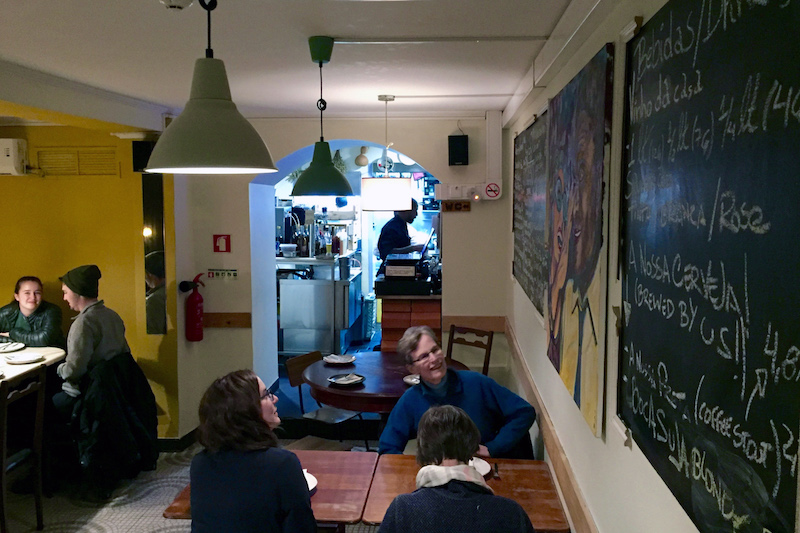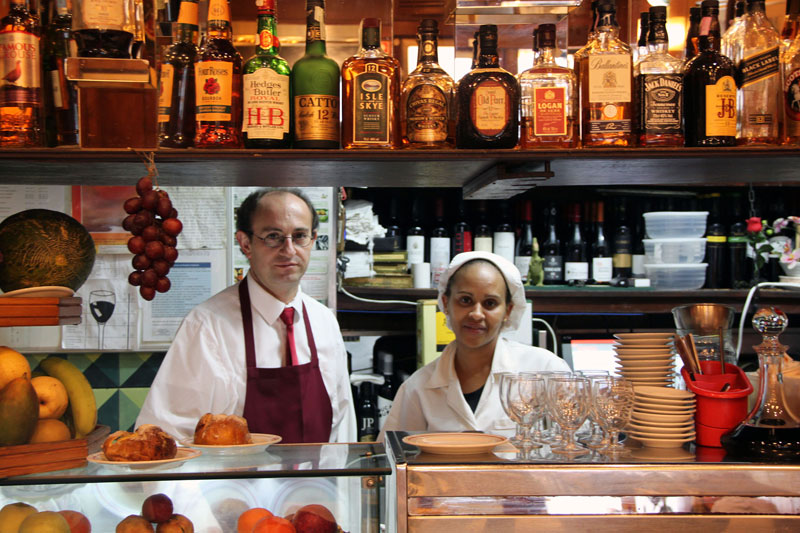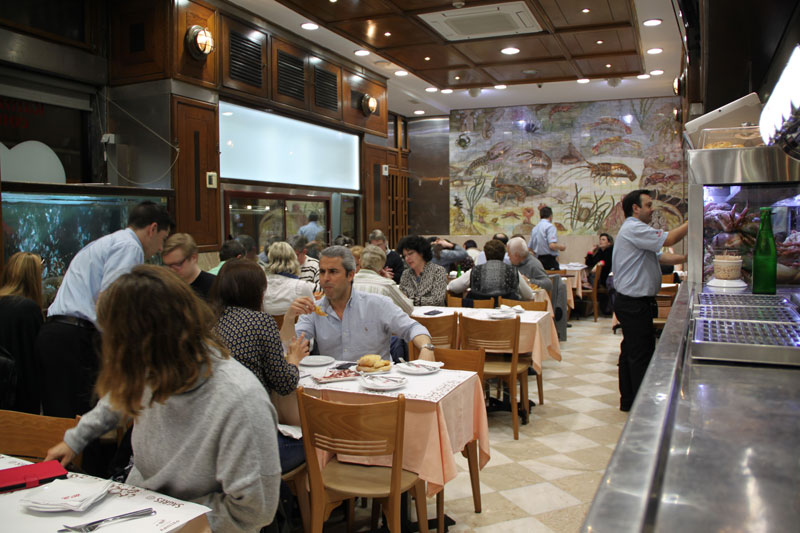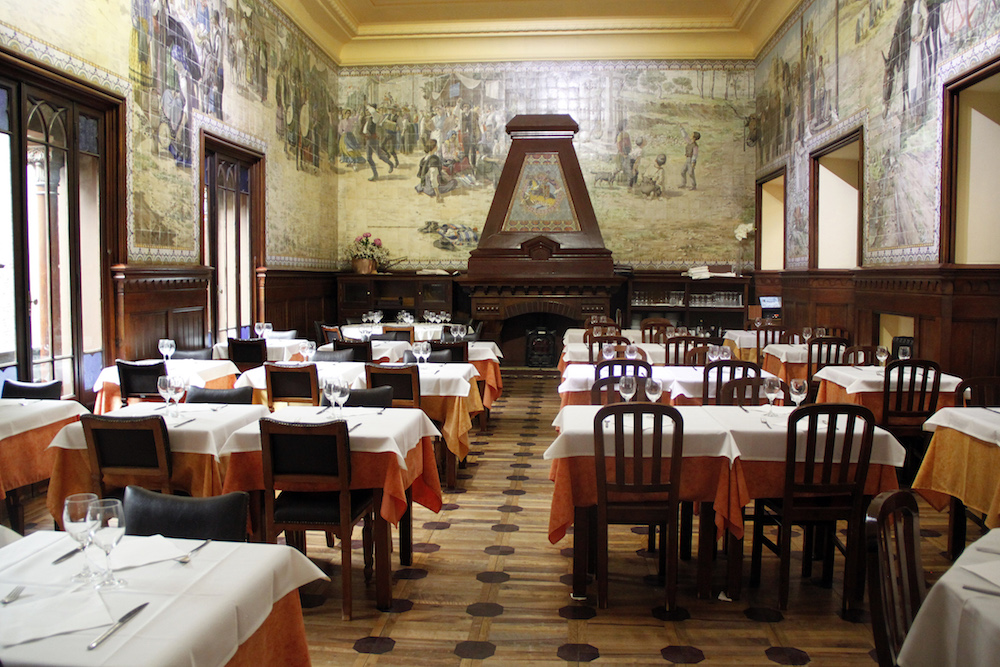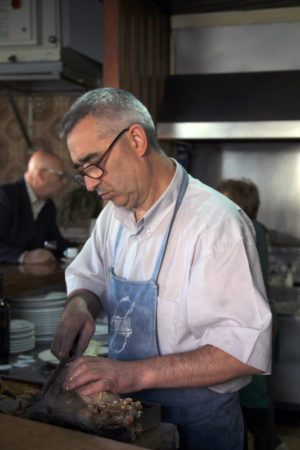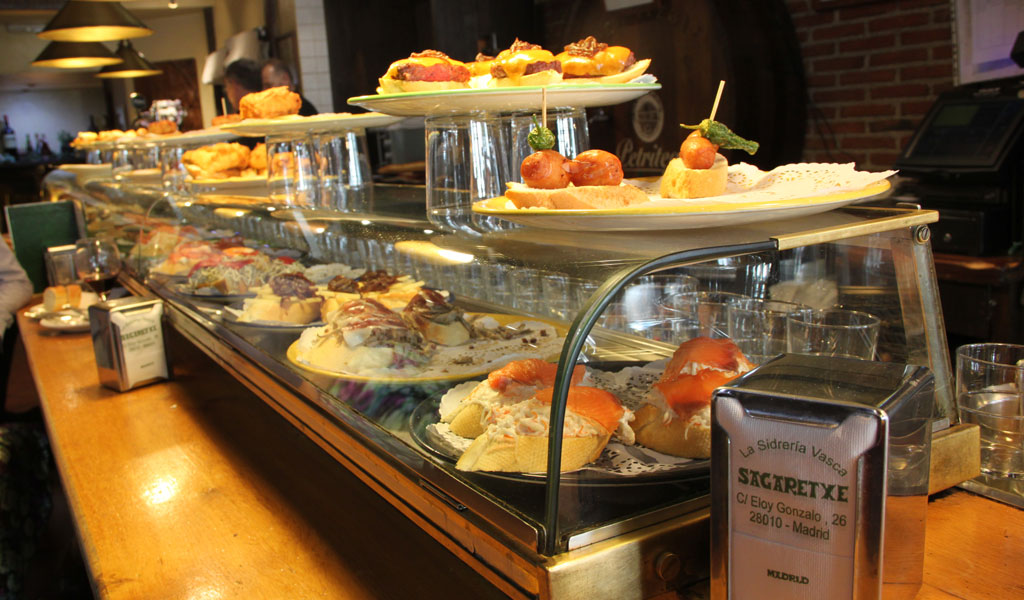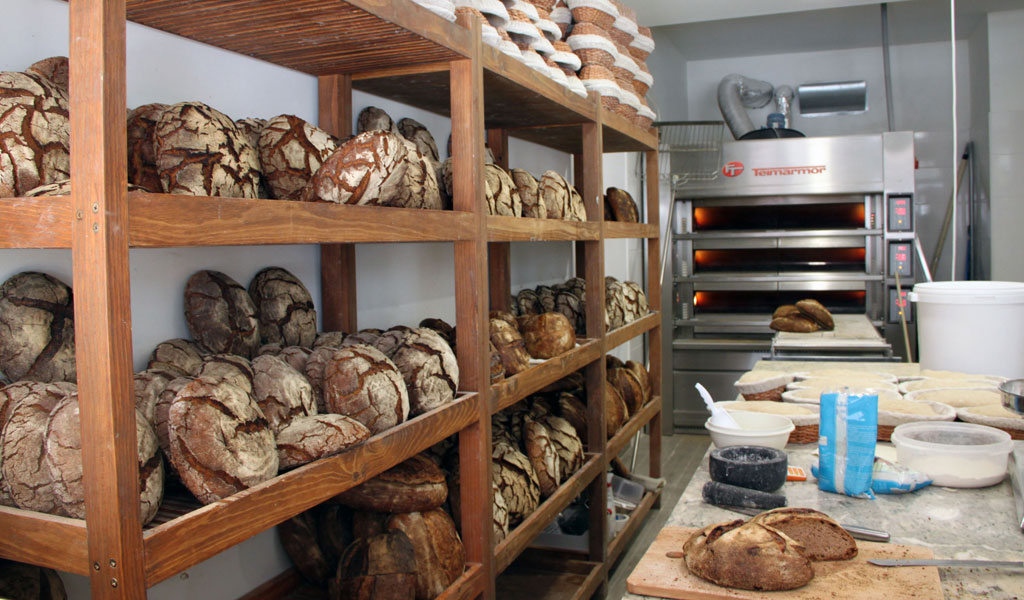We can't find the internet
Attempting to reconnect
Something went wrong!
Hang in there while we get back on track
Search results for "Francesca Savoldi"
Lisbon
Taberna Sal Grosso: The Revivalists
On a steep, narrow curve that winds up from Santa Apolonia station, a growing group of people waits. Whatever the weather, a small crowd will always be there, ready for the low doors to open at 8 p.m. Taberna Sal Grosso, which seats around 25 people, has been holding its own, quietly, for five years. Now, a seat at this small spot is one of the most coveted in town. Sal Grosso’s modern takes on classic dishes are fun and inexpensive, particularly if you are not on a Portuguese salary. This tightly packed cubby was located in the right spot when the turistificação of the historic center hit and the intense surge in foodie footfall took over neighborhoods like Alfama.
Read moreLisbon
O Churrasco: Diamond in the Touristy Rough
Rua das Portas de Santo Antão is probably the most touristy food street in Lisbon. This pedestrian road is full of restaurants with guys outside hawking their specials and menus offering out-of-season sardines and frozen pizzas. But there’s more to this downtown thoroughfare than just luring American vacationers to overpriced mediocrity. Located on this road, buzzing even before the tourist boom thanks to its central location, musical theaters and local commerce, is one of the city’s timeless classics, O Churrasco. This restaurant looks different from the usual chicken restaurant, with impressionistic paintings hanging from its wooden walls and waiters in bow ties, and has been a camouflaged gem for many years, a particular favorite of middle-class families and theater lovers.
Read moreLisbon
Cervejaria Ramiro: Crustacean Station
Cervejaria Ramiro is the undisputed temple of seafood in central Lisbon. The 50-year-old business represents an old-school type of eatery: a beer hall where the seafood is fresh and cheap, with a choice from the daily menu or directly from the large aquariums that look out to the street. Taking up two floors of a late-Art Nouveau building on Avenida Almirante Reis, Cervejaria Ramiro is perpetually crowded. The clientele has not been affected by the recent urban regeneration of the area, which is turning the degraded Intendente neighbourhood, long affected by social exclusion, into a fashionable district. In fact, the restaurant was already popular in the 1970s, when eating seafood was new to the capital.
Read moreLisbon
Casa do Alentejo: Grand Setting, Humble Food
Walk in through an anonymous iron gate, halfway down a road you would assume to be completely spoiled by mass tourism, and a surprise awaits. Casa do Alentejo in downtown Lisbon is one of the many old-school regional associations in the city – but none of the others look quite like this. Many who come across this 17th-century building think they are visiting a Moorish palace, perhaps a remainder of the time Muslims ruled over Al-Ishbuna. It’s a misleading impression. In fact, this was a generic building that served different uses over its long history, including as a residence and as a school.
Read morePorto
Casa Guedes: Roasted to Porkfection
Forget the famous francesinha. The best sandwich in Porto – arguably in the country – can be found in a little 1970s tile-lined eatery; the unremarkable interior belies the iconic status of its most celebrated dish. Served up on the corner of Praça Poveiros, a square named after the fishermen from the storied maritime city Póvoa de Varzim, located just north of Porto, the sandes de pernil (roast pork sandwiches) are a curious joy to watch being assembled as well as, of course, to eat. One by one, roast pork legs are slowly cooked in the huge oven in the kitchen behind the bar of Casa Guedes. They are then served directly from the roasting tray by the owner himself, Mr. Cesar.
Read moreElsewhere
Sagaretxe: Madrid's Pintxos Pioneer
The ascendance of Spanish gastronomy has largely had a Basque signature, which, together with the Catalan scene, is seen as the vanguard in Spanish haute cuisine. But while Nouvelle Basque has gotten all the spotlight lately, the food culture of this northern region has always been outstanding, thanks to its abundant rains and a territory that encompasses the Cantabrian Sea and Ebro River. Basque taverns are largely known for their pintxos, a kind of tapas that are more sophisticated in taste as well as in design. At certain times of day these small plates fly nonstop out of the kitchen, usually chosen at the chef’s discretion.
Read moreLisbon
Gleba Moagem & Padaria: Friends in Knead
Bread may be fundamental to Portugal’s food culture, but over the last few years the baked goods landscape in the country has begun looking increasingly uniform, with fake neo-classic franchising playing no small part in its decline. Although many old and family-run bakeries can’t keep up with the competition – especially in the cities – there are a few initiatives kneading a small revolution. Courses, workshops and experimental research are creating a new class of future bakers who often rework old techniques. Among them is 21-year-old Diogo Amorim. Gleba, his bakery, with its contemporary look and historic techniques, attracts customers from all over Lisbon. It opened six months ago in Alcantara, a neighborhood that shows traces of many past lives, from industrial working-class to the aristocratic.
Read more